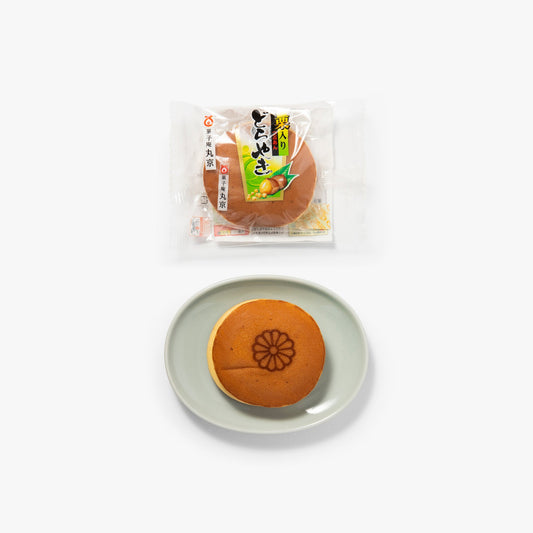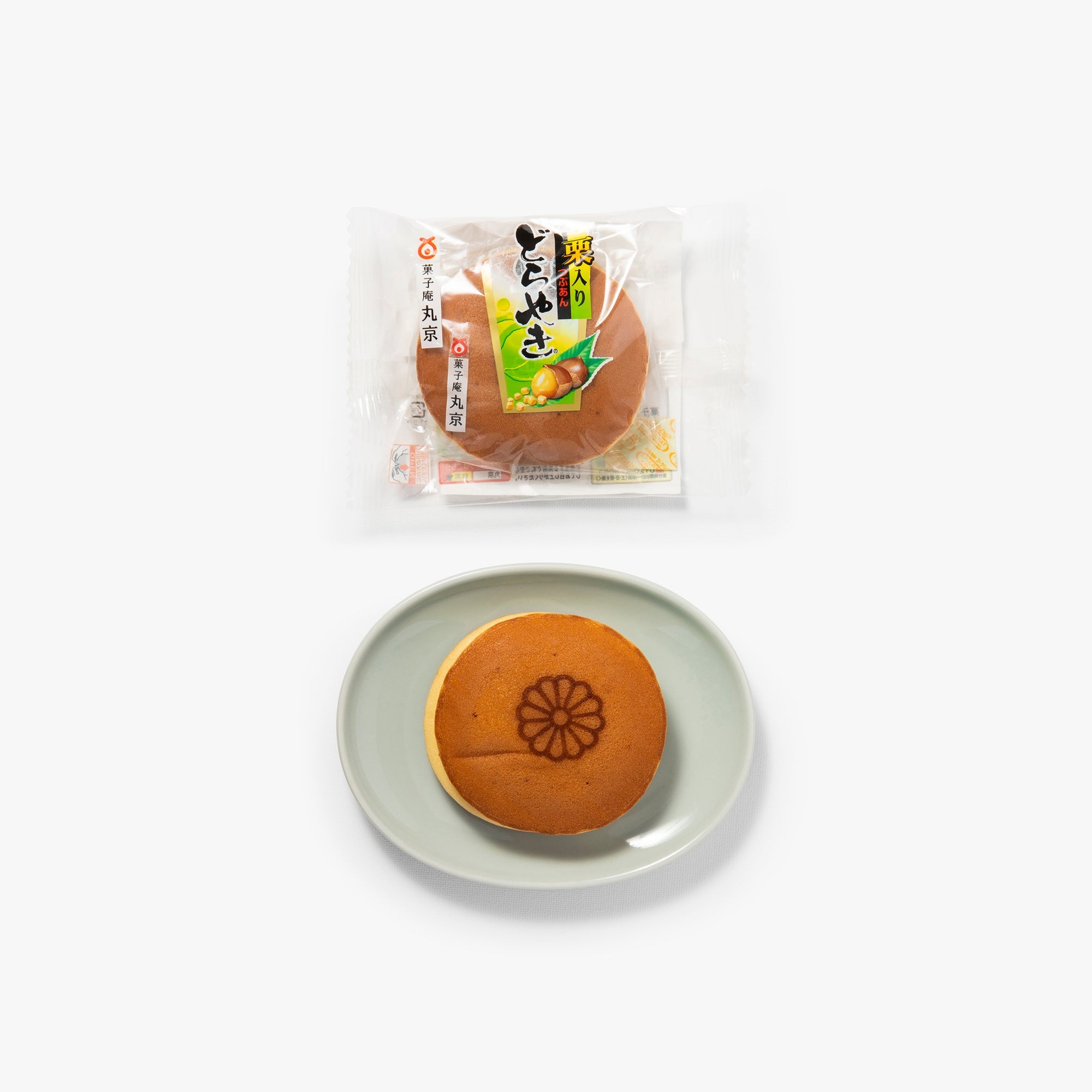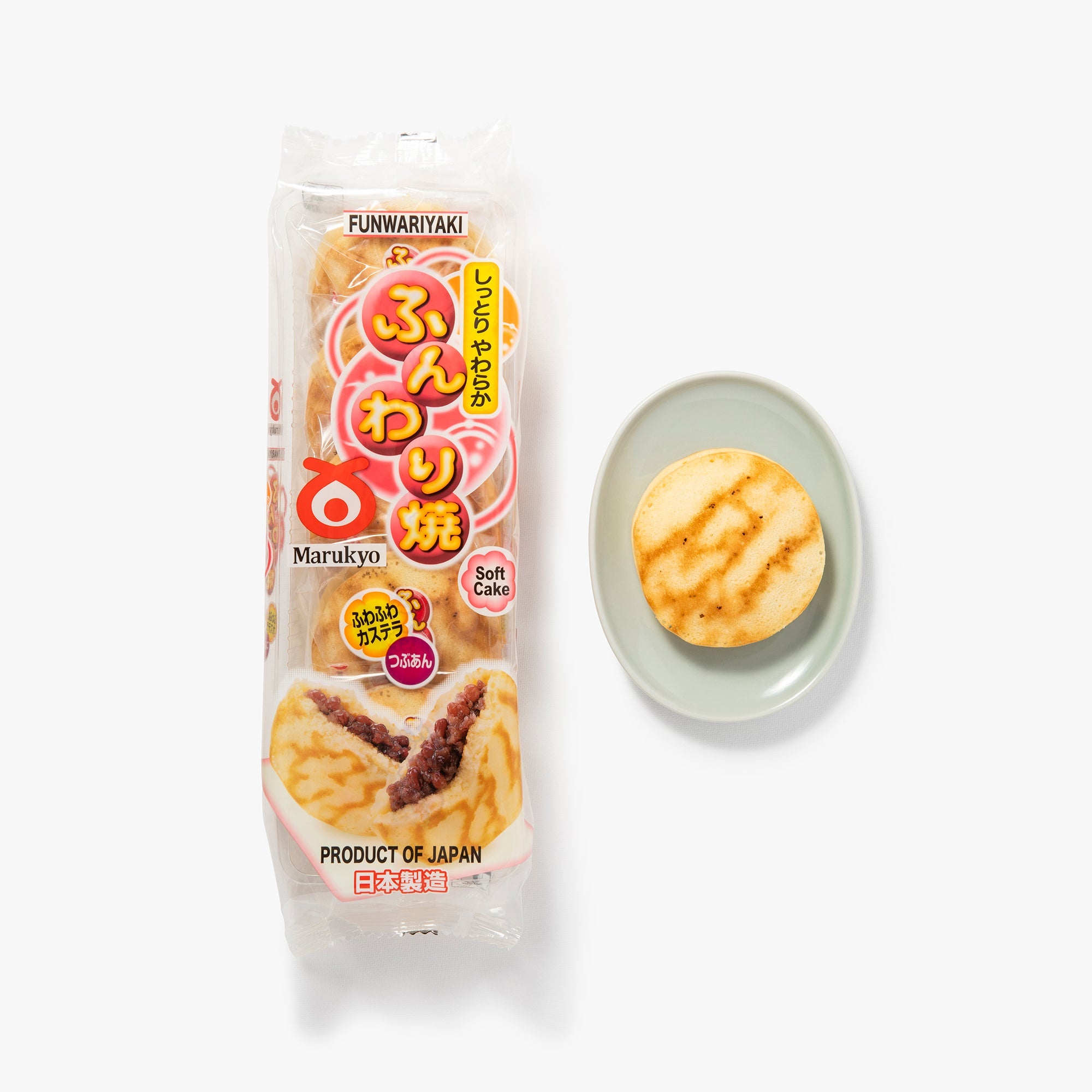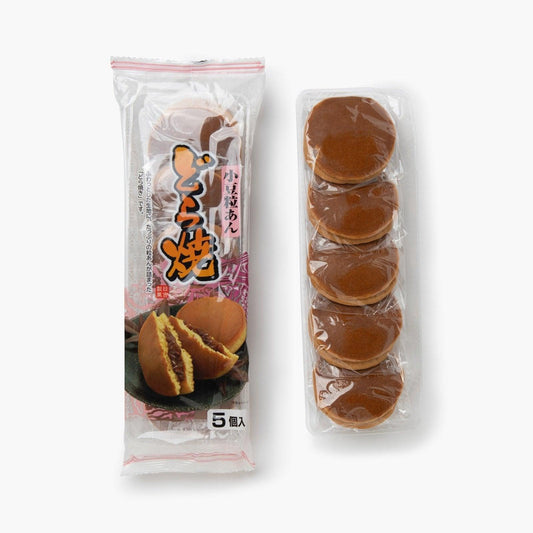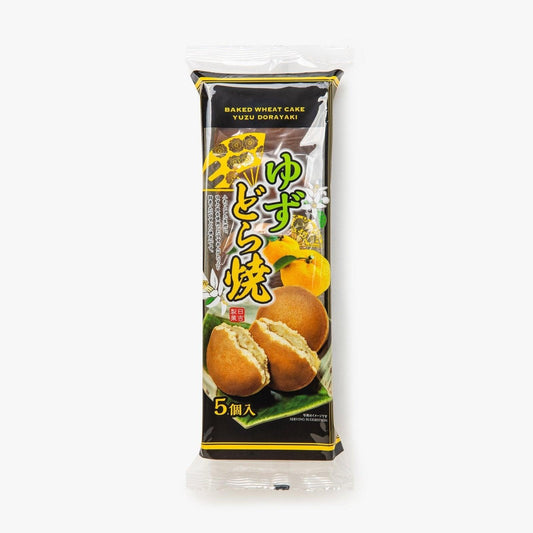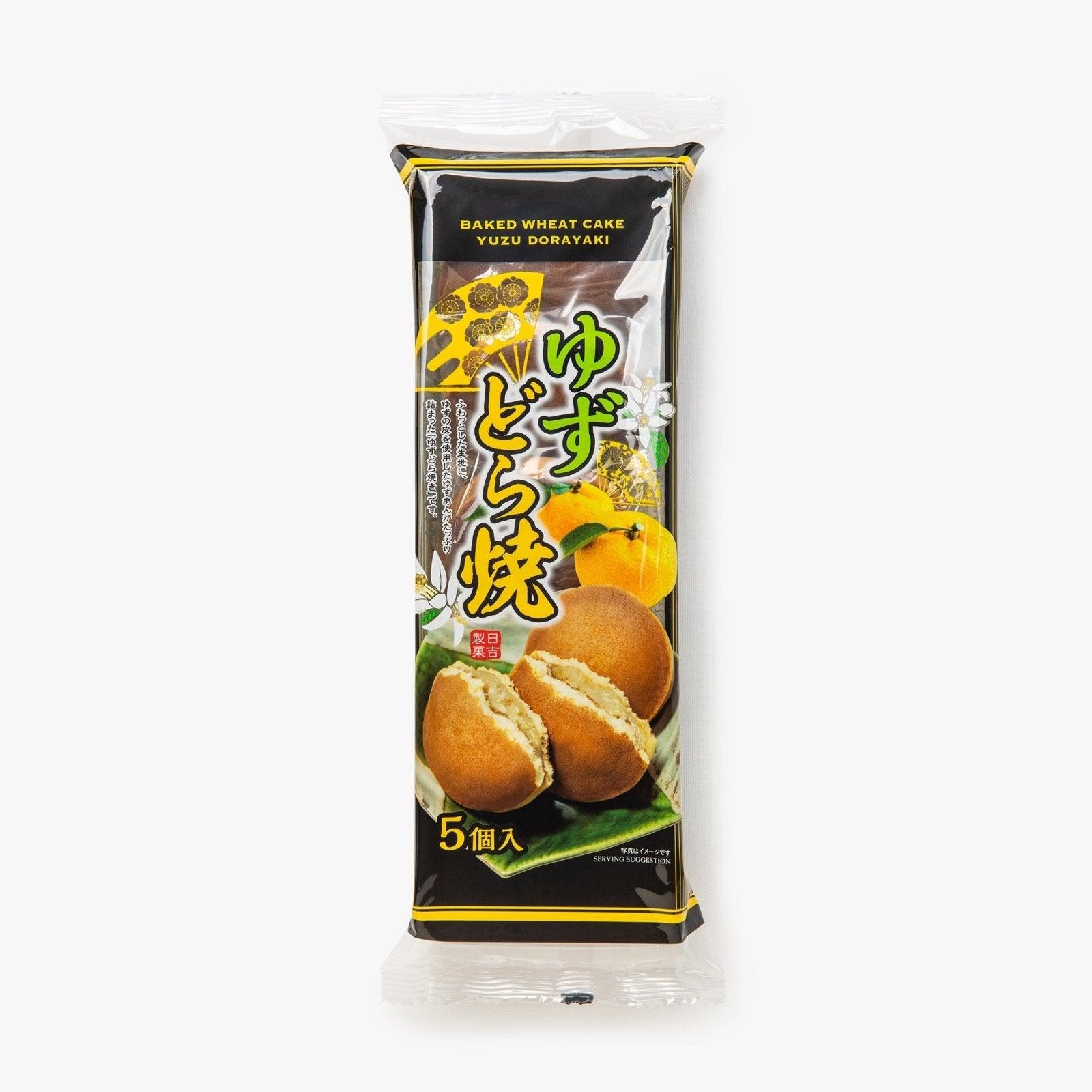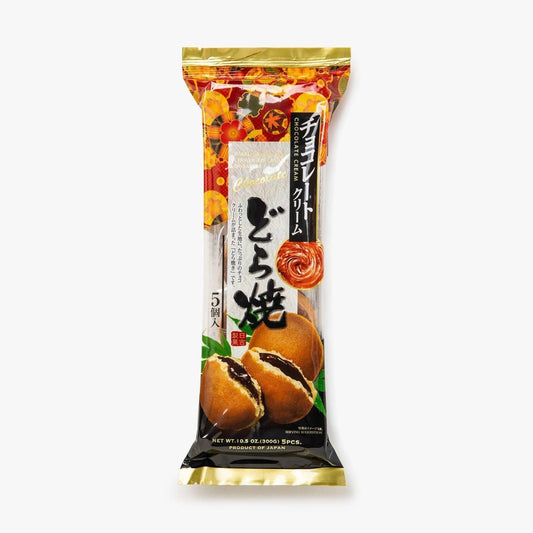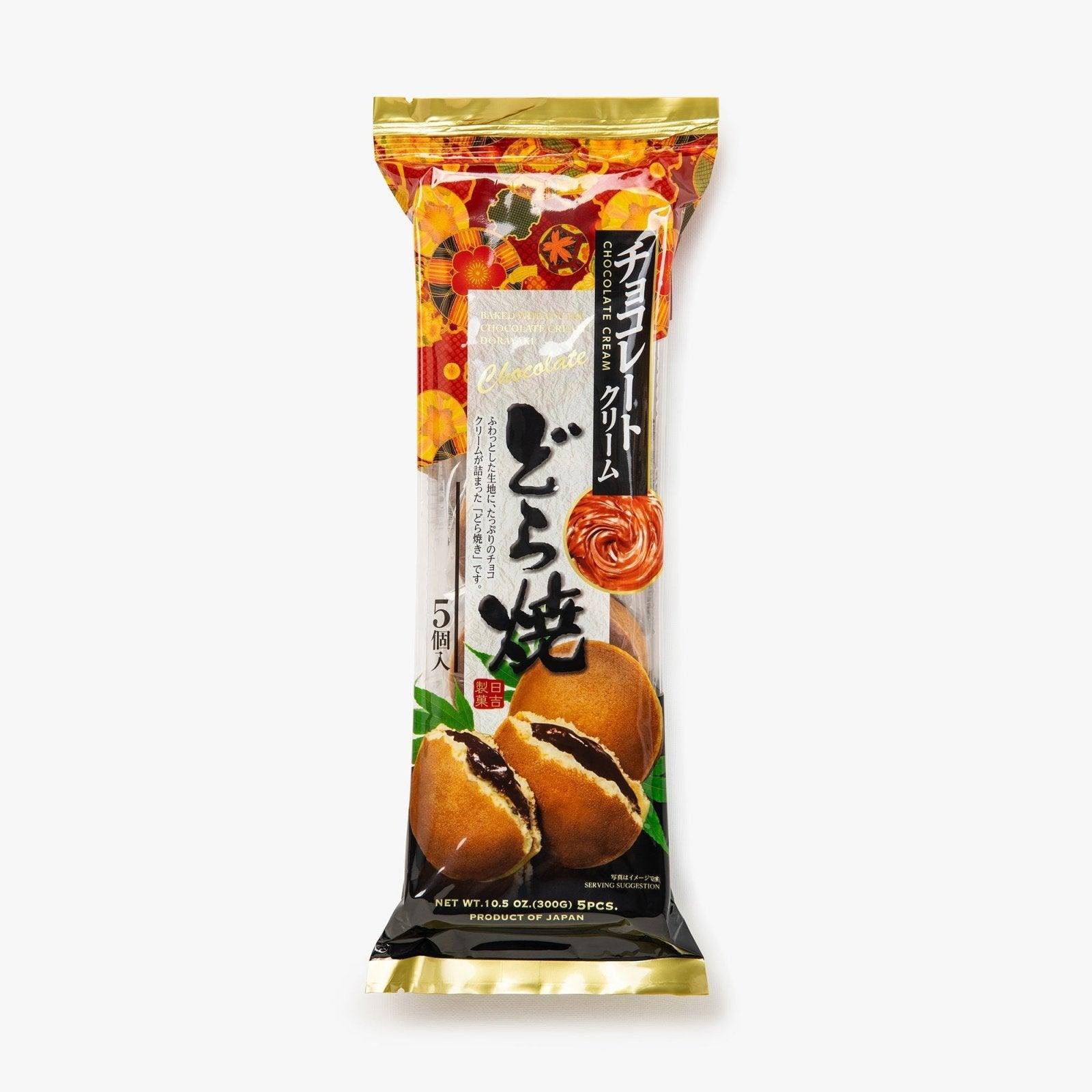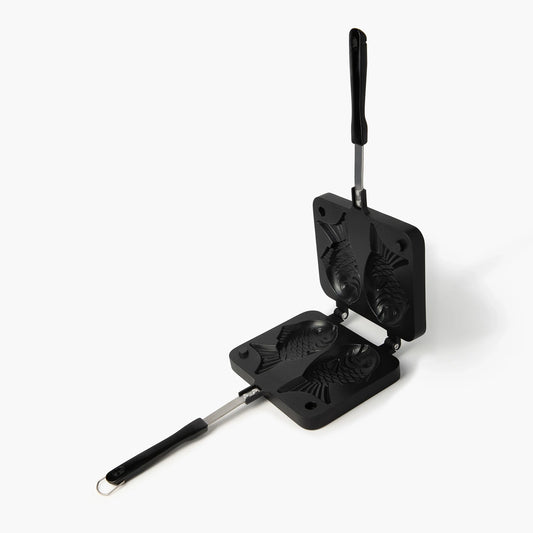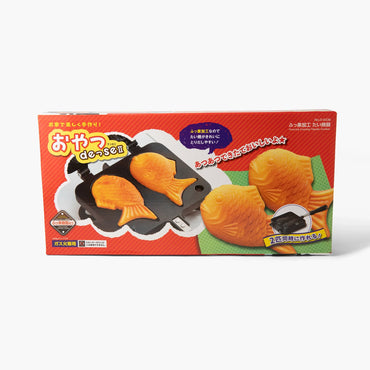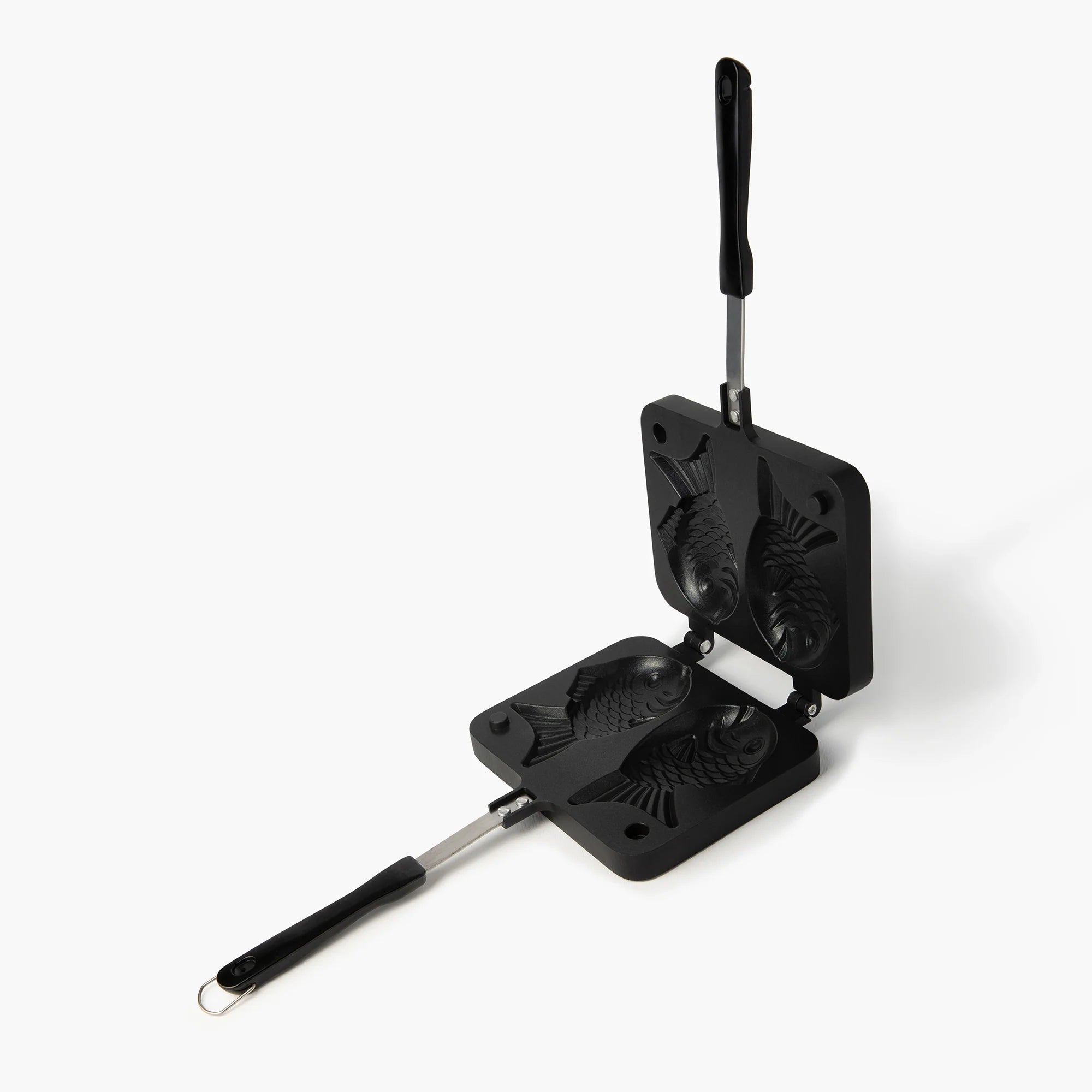Find out more about dorayaki and taiyaki
What's the difference between dorayaki and taiyaki?
Dorayaki and taiyaki are two popular Japanese desserts, but they differ in shape, texture and cooking method.
Dorayaki consists of two fluffy pancakes, made with a sweet batter of flour, eggs and honey, and traditionally filled with a red azuki bean paste called anko. It is often enjoyed with matcha tea or sweet sake on the side.
As for taiyaki, it's a fish-shaped cake, baked in a special mold that gives it its emblematic appearance. Its batter is closer to that of a crispy waffle, and it's usually filled with red bean paste, but sometimes with custard, chocolate or even matcha.
What are the origins of dorayaki and taiyaki?
Dorayaki dates back to feudal times. Legend has it that a samurai named Benkei left his drum(dora) with a farmer, who used it as inspiration to bake a sweet pastry on it, giving birth to this emblematic dessert. Its modern evolution, with two fluffy pancakes topped with red azuki bean paste(anko), dates from the early 20th century.
As for taiyaki, it appeared in Tokyo at the end of the Meiji era (around 1909). It derives from imagawayaki, another round filled Japanese cake. Its fish shape(tai means sea bream in Japanese) symbolizes good luck and prosperity. The dough is similar to that of waffles, and it is traditionally filled with red beans, although variations exist with matcha, chocolate or custard.
What types of fillings are available other than red bean paste (anko)?
Sweet alternatives :
- Chocolate - Ideal for a gourmet touch.
- Matcha - The intense fragrance of Japanese green tea, sometimes blended with cream or white beans.
- Yuzu - A refreshing garnish made from Japanese citrus fruit.
- Crème pâtissière - A creamy texture, often flavoured with vanilla or sweet miso.
- Fruit - Banana, strawberry or even chestnut, combined with honey or whipped cream.
- Mochi - A combination of glutinous rice paste for an even more melting texture.
Savoury variations :
- Cheese - A fusion of Japanese and Western cuisine.
- Soy & miso sauce - A surprising umami touch.
- Saké & salmon - For an original gastronomic twist.
Why is dorayaki associated with Doraemon?
Dorayaki has become world-famous thanks to Doraemon, the famous robot cat in the Japanese manga created by Fujiko F. Fujio. In the story, Doraemon is passionate about this Japanese dessert, and can't resist devouring it whenever he gets the chance.
This association is so strong that dorayaki has become emblematic of Japanese pop culture, and is often used in Japanese cuisine to represent a comforting sweetness. The very name Doraemon may be inspired by "dorayaki" and the suffix "-emon", once common in traditional Japanese names.
Are there regional variations of dorayaki and taiyaki in Japan?
Dorayaki:
- In Kyoto, there are matcha and chestnut versions.
- In Nagoya, some dorayaki are topped with shiro-an (white bean paste) or more modern creations like miso cream.
- In Kansai, dorayaki is sometimes served with a thicker, spongier paste, different from the classic style.
Taiyaki:
- In Tokyo, traditional taiyaki is thin and crispy with an anko filling.
- In Osaka, there's a version called imagawayaki (thicker and rounder).
- In some regions, you'll find taiyaki filled with custard, chocolate, cheese or yuzu.
- In Kyushu, some are even topped with red bean paste and mochi, for an even more melt-in-the-mouth texture.
What's the best drink to accompany dorayaki or taiyaki?
Dorayaki and taiyaki go perfectly with drinks that balance their sweetness and chewy or crunchy texture. Here are a few suggestions:
Japanese teas:
- Matcha green tea Its bitterness contrasts with the sweet anko paste and enhances the richness of the dorayaki.
- Hojicha A roasted tea with roasted notes that goes well with the sweetness of red beans.
- Genmaicha A puffed rice tea with a hint of hazelnut.
Hot drinks:
- Coffee: Espresso or filter coffee enhances the softness of dorayaki and the crunchiness of taiyaki.
- Sweet sake For a more traditional experience, a light sake can enhance the flavor of red beans.
Cold drinks:
- Soy or rice milk: For a sweet, light alliance.
- Yuzu iced tea: Its refreshing acidity balances the richness of dorayaki and taiyaki.
- Japanese lemonade (Ramune) For a touch of sparkling sweetness.









